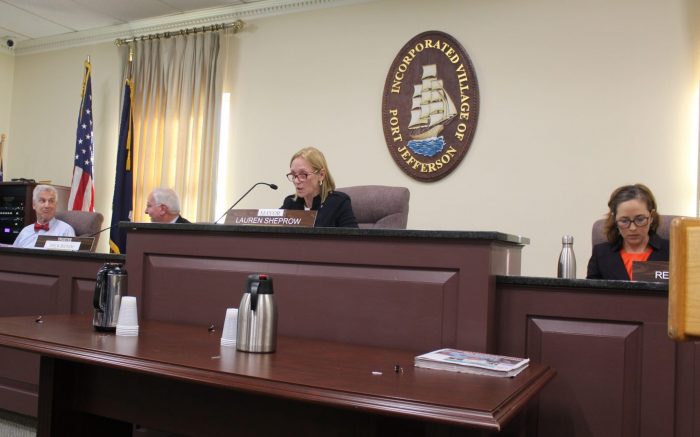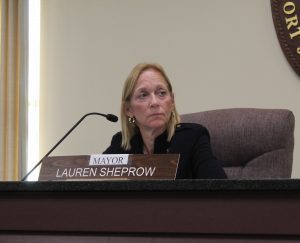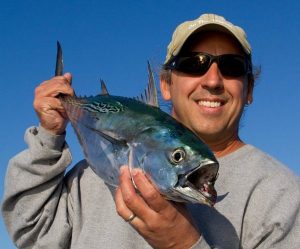Stony Brook University’s Staller Center for the Arts turns into a movie lover’s mecca when new independent films screen at the Stony Brook Film Festival on evenings and weekends from Thursday, July 20 to Saturday, July 29. The popular festival, now in its 28th year, will become a hub for some of the best filmmakers working today, a meeting ground for favorite actors and rising stars, and a showcase of new masterpieces as it pairs memorable short films with an array of features you won’t see anywhere else.
Presented by Island Federal, this year’s lineup offers 36 films from over 26 countries. The Festival kicks off with the U.S. premiere of the Dutch film Sea of Time. Led by Sallie Harmensen (SkyTV’s Devils), Reinout Scholten van Aschat, and of Danish stage and screen fame Elsie De Brauw, the harrowing, heartbreaking, and ultimately hopeful film is anchored by the powerhouse performances that examine enduring love in times of hardship.
Many international films in this year’s Festival are threaded by this theme of love overcoming life’s difficulties. Whether it is the blossoming young love against all odds in the Polish period drama March ’68, the touching Japanese film Trapped Balloon (starring Toko Miura of the 2022 Oscar-winning film Drive My Car), the gorgeous and romantic love story of My Sailor, My Love with Scottish film icon James Cosmo (Game of Thrones, His Dark Materials) and Tony-Award Winner Bríd Brennan (Dancing at Lughnasa), or the hilarious, music-infused road trip feature Grandpa Goes South from Slovenia.
Continuing on this shared theme of overcoming is Martha, a film that tells the true story of Martha Liebermann, wife to famed painter Max Liebermann, as she faces the Third Reich on own her terms.
At the same time, the powerful documentary Radioactive, directed by Stony Brook University professor Heidi Hutner, recounts the saga about four housewives from Three Mile Island facing down the nuclear industry Goliath for over forty years, and The Grandson tells the story of a man’s refusal to allow heartless scammers to get the best of his grandfather in this tight Hungarian thriller.
There is no shortage of independent cinema in this year’s lineup, including the Serbian puzzle piece Where the Road Takes You, which takes the Western trope of the stranger in town who saves the girl and flips it on its head. From Canada comes the quirky comedy I Like Movies about the reformation of a crabby, awkward teenage cinephile.
Also providing comic relief is the scenic and quietly riotous American indy Friends From Home, shot on the cheap during Covid, and from Italy, the strangely compelling Amanda, about a young woman who suddenly decides that an acquaintance from her very young childhood is now her best friend.
Rounding out a host of stellar independent offerings is the wild Yes, Repeat, No, set in a studio where three actors are all auditioning for the same role. This courageous and unforgettable film zeroes in on questions of conflicting identity while managing to surprise at every turn.
Some recognizable faces also show up in this year’s lineup, including Richard Kind, Karen Allen, and Peter Reigert in Hit Man: Secrets of Lies and the wickedly hilarious Two Chairs, Not One, starring Caitlin Reilly (HBO’s Hacks), whose wildly popular TikTok account has amassed hundreds of millions of views.
The closing night feature tells an extraordinary tale of overcoming. Divertimento shares the true story of sisters Zahia and Fettouma Ziouani, a conductor and a cellist, who, despite being Algerian immigrants from the wrong part of Paris, managed to create a world-class professional orchestra with little more than respect, determination, and sheer talent. Opening and closing with the insistent rhythm of Ravel’s Bolero, the film makes its hopeful message equally insistent: family and community can make the impossible possible.
“We are very excited to have filmmakers from all over the world join us for their premiere screenings. Our audiences can gather in a huge theater with Long Island’s largest screen, to see movies the way they were meant to be seen,” says Festival Director Alan Inkles.
“Not only are these films not available on any streaming format, but you also get to hear directly from the filmmakers themselves, ask them a question at our live Q&A, and even vote for your favorite,” he said.
Additional sponsors for the Stony Brook Film Festival include Campolo, Middleton & McCormick, LLP; Suffolk County; Altice Media; and WLIW/PBS.
FILM SCHEDULE
OPENING NIGHT
Thursday, July 20 at 8 p.m.
Feature: Sea of Time
Short: The Red Suitcase
Friday, July 21 at 7 p.m.
Feature: Exodus
Short: Hit Friends
Friday, July 21 at 9:30 p.m.
Feature: I Like Movies
Short: Chipper
Saturday, July 22 at 7 p.m.
Feature: My Sailor, My Love
Short: The Countryman
Saturday, July 22 at 9:30 p.m.
Feature: Grandpa Goes South
Short: Two Chairs, Not One
Sunday, July 23 at 7 p.m.
Feature: Martha
Short: Stuck
Sunday, July 23 at 9:30 p.m.
Feature: Friends From Home.
Short: At A Glance
Monday, July 24 at 7 p.m.
Feature: Trapped Balloon
Short: Healer
Monday, July 24 at 9:30 p.m.
Feature: A Fleeting Encounter
Short: Winter’s Passing
Tuesday, July 25 at 7 p.m.
Feature: Elik & Jimmy
Short: The Third Defector
Tuesday, July 25 at 9:30 p.m.
Feature: Amanda
Short: Mahogany Drive
Wednesday, July 26 at 7 p.m.
Feature: Radioactive: The Women of Three Mile Island
Short: Queen Moorea
Wednesday, July 26 at 9:30 p.m.
Feature: Where the Road Leads
Short: Hit Man: Secrets of Lies
Thursday, July 27 at 7 p.m.
Feature: March ‘68
Short: The Father, The Son and The Rav Kalmenson
Thursday, July 27 at 9:30 p.m.
Feature: Yes Repeat No
Short: Demon Box
Friday, July 28 at 7 p.m.
Feature: The Grandson
Short: Death By Puppies
Friday, July 28 at 9:30 p.m.
Feature: First Snow of Summer
Short: Voices
CLOSING NIGHT
Saturday, July 29 at 8 p.m.
Feature: Divertimento
Short: The Basics of Love
CLOSING NIGHT AWARDS
10:30 p.m. Presented on stage.
——————————————-
Ticket information
All screenings are held at Stony Brook University’s Staller Center for the Arts, 100 Nicolls Road, Stony Brook in the 1,000-seat Main Stage theater.
Festival goers can choose from a Gold Pass “VIP” ($250), Regular Pass ($100), new! Flex Pass ($75), or Individual Pass of $15, $13.50 seniors. To learn about the different membership levels and their benefits, call 631-632-2787 or visit www.stonybrookfilmfestival.com.
This article first appeared in Summer Times, a seasonal guide supplement by TBR News Media.






















